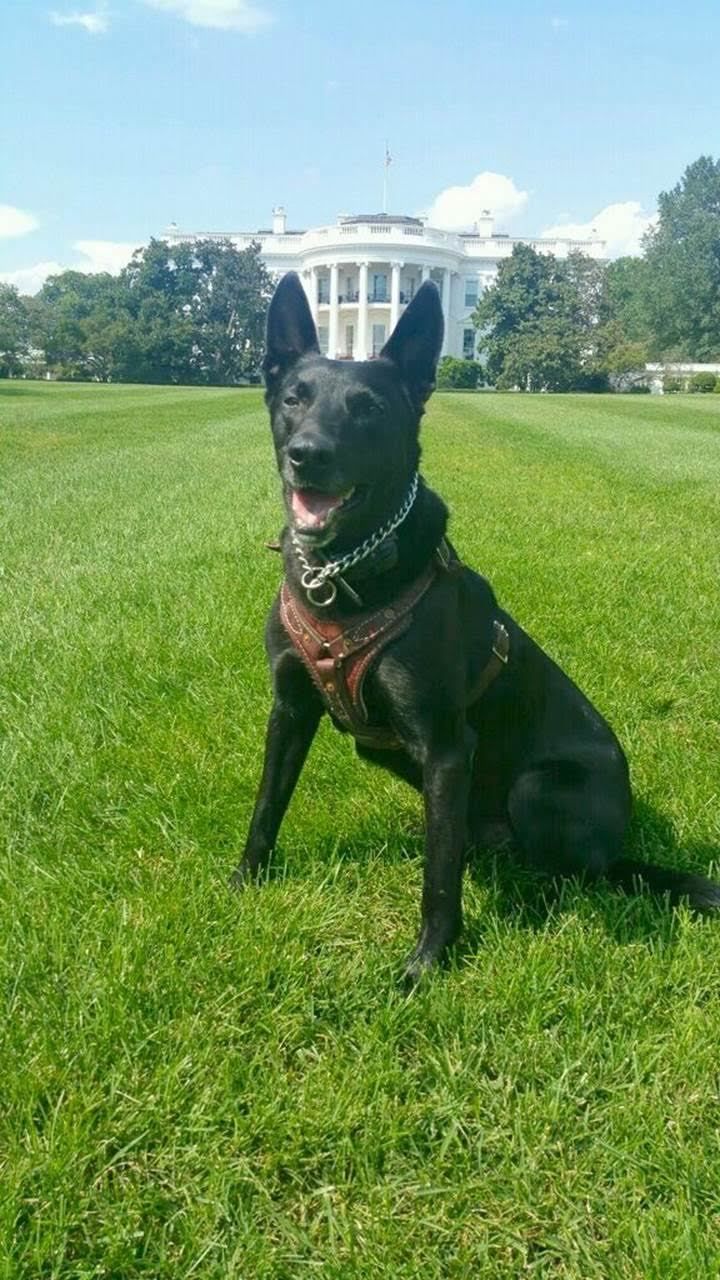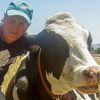
A new book by best-selling author Maria Goodavage publishing October 25 called Secret Service Dogs: The Heroes Who Protect the President of the United States is a fascinating read.
The book's description reads as follows:
In an age fraught with terrorism, United States Secret Service canine teams risk their lives to safeguard the president, vice president, their families, visiting heads of state, and a host of others. Unprecedented access to these heroic dog teams has allowed a fascinating first-time-ever look at a very special breed of heroes.
Wherever the president goes, there will be dogs. They’ll be there no matter what the country or state. They’ll be there regardless of the political climate, the danger level, the weather, or the hour.
“If you let down your guard on the job,” says Special Agent Bill G., canine program manager, “it can change the history of the world.” It’s a burden Secret Service dog handlers take extremely seriously regardless of their specialty. Tactical dog handlers on the White House lawn, handlers whose dogs sniff for explosives around the world, and those who walk their amiable floppy-eared dogs up and down Pennsylvania Avenue all live one common mantra: Not on my watch. Or my dog’s.
Secret Service Dogs immerses readers into the heart of this elite world of canine teams who protect first families, popes, and presidential candidates: the selection of dogs and handlers, their year-round training, their missions around the world, and, most important, the bond—the glue that holds the teams together and can mean the difference between finding bombs and terrorists or letting them slip by.
“These animals will gladly run into a hail of gunfire,” says '"Stew," a Secret Service ERT tactical canine unit supervisor. “All they ask in return is for their handlers to throw the ball with them, pet them, and talk to them in an embarrassingly high voice.”
Secret Service Dogs celebrates the Secret Service’s most unforgettable canine heroes. It is a must-read for fans of Maria Goodavage, anyone who wants a rare inside view of the United States Secret Service, or just loves dogs.
I hadn’t thought much about this topic and I really enjoyed the book, and was fortunate enough to be able to interview the author.
Why did you write Secret Service Dogs?
I knew the Secret Service used dogs, but there was very little out there about the agency’s canine program. After two bestsellers about military dogs, I thought it would be fascinating to shift gears and look at the dogs who protect the president of the United States, the First Family, presidential candidates, and even the pope, when he visits the United States.
Why do you have so much interest in dogs in general, and working dogs in particular?
My father was a very young soldier and World War II veteran. I grew up with him telling us about how the dogs who worked with them saved lives by day and saved souls by night. The dogs were these heroes who could detect and take down the enemy, but at the end of the day, they seemed to find the people who needed them most—like my dad—and go hang out with them.
That started my fascination with military type dogs, and it’s only grown with time. I love that the bond between working dogs and handlers is really what their lifesaving missions boil down to. Without that bond, there’s nothing. As one handler told me, “We know if they are mad, if they’re sad, if they’ve done something mischievous, or when they are sick. On the other hand, they know the same about us.”
Everything depends on that bond, on being able to trust one another implicitly, and to read each other even better than long-married spouses! The working dog/handler partnership is officially a professional relationship, but the bottom line is that there’s a deep love from both sides that makes it work. I think it’s beautiful that there can be this kind of love in such an intense job – and a government job, no less!
What do you say to some people who wonder about the “use” of dogs for these purposes?
Unlike so many people, these dogs love their work. We should all be so lucky. At such a high level as the Secret Service canines, the dogs are selected with the utmost care, and only the dogs with the most drive and the most heart make the grade. They would be bored as pets sitting around the house. They live to work, to make their handlers happy. Work to them is play. Their paycheck is the bounce of a rubber toy, and happy, heartfelt praise from their handlers.
What surprised you the most in the course of your research for Secret Service Dogs?
I was surprised and impressed by how integral Secret Service dogs are to the many circles of protection for the president. Explosives detection dogs precede presidents everywhere they go. Floppy-eared dogs sniff for explosives on people outside the White House fence. Tactical dogs protect the president and First Family on the White House side of the fence. The dogs go anywhere they’re needed, and sometimes that means around-the-world trips.
How does a new president coming into the White House affect the Secret Service’s work with their dogs?
Unlike a new president’s effect on humans, a new president in the White House doesn’t directly affect Secret Service dogs. The dogs are rarely near the president, so they don’t need to get used to a new protectee. That said, the dogs who work on the White House grounds often do face one change: The switching of presidential pets. As the scent of the old First Dog fades away, they may find themselves encountering the scent of a new First Dog. And sometimes the dog himself. Former president George W. Bush’s dog Barney would sometimes break away and make a mad dash for a Secret Service dog. Luckily for Barney, their handlers prevented disaster from happening to the feisty Scottish terrier.
Is there anything else you'd like to tell readers – anything you learned that might be helpful to regular folks with pet dogs?
Believe in your dog! He or she has a tremendous capacity for learning—much greater than you may realize.
Thank you Maria. I really enjoyed Secret Service Dogs and highly recommend to a wide audience. The behind-the-scenes view it offers is eye-opening, and it's clear that these working dogs are vital to national security in a perilous world. The dogs should be lauded for their tireless and selfless work on our behalf.
Marc Bekoff’s latest books are Jasper’s Story: Saving Moon Bears (with Jill Robinson), Ignoring Nature No More: The Case for Compassionate Conservation, Why Dogs Hump and Bees Get Depressed: The Fascinating Science of Animal Intelligence, Emotions, FRIENDSHIP, and Conservation, Rewilding Our Hearts: Building Pathways of Compassion and Coexistence, and The Jane Effect: Celebrating Jane Goodall (edited with Dale Peterson). The Animals’ Agenda: Freedom, Compassion, and Coexistence in the Human Age (with Jessica Pierce) will be published in early 2017.
